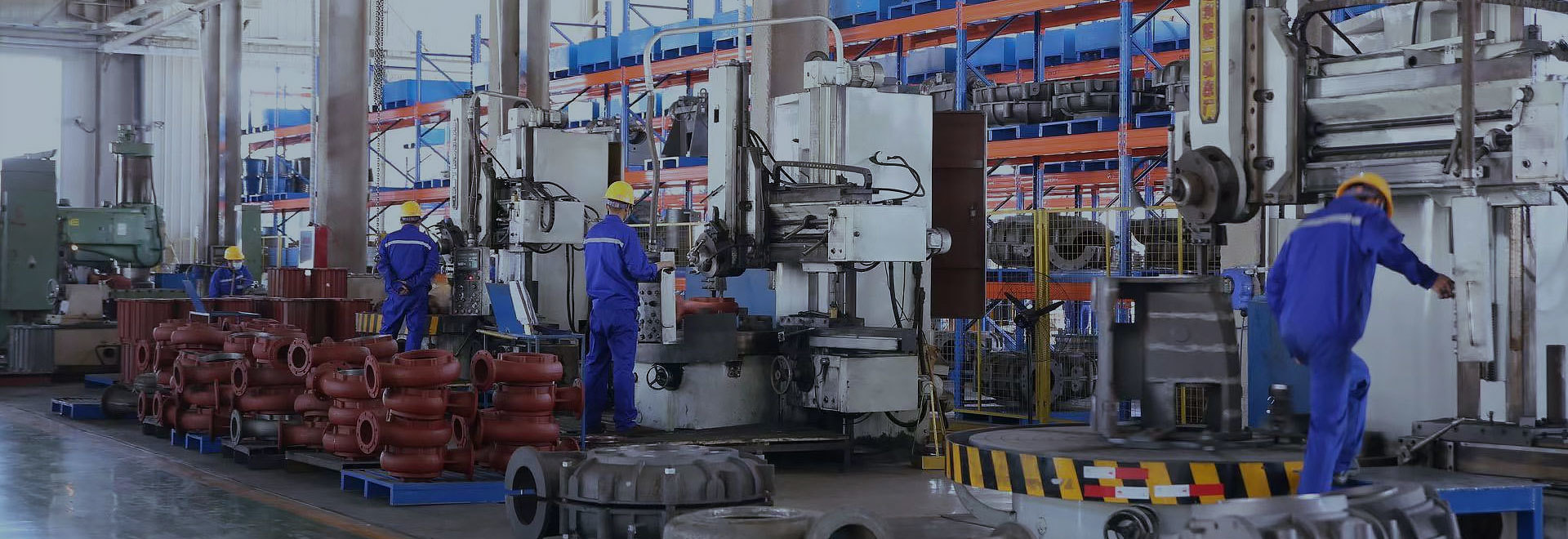How to Read a Pump Curve?
Published:
May 28,2025
A pump curve is a vital tool used to evaluate and understand the performance of a pump under various operating conditions. It helps engineers, technicians, and operators choose the right pump for a specific application by providing information on how the pump behaves in terms of flow rate, head, efficiency, and power consumption.

A pump curve is a vital tool used to evaluate and understand the performance of a pump under various operating conditions. It helps engineers, technicians, and operators choose the right pump for a specific application by providing information on how the pump behaves in terms of flow rate, head, efficiency, and power consumption. In this article, we will discuss how to read and interpret a pump curve effectively.
What is a Pump Curve?
A pump curve is a graphical representation that shows the relationship between the flow rate of a pump and the head (pressure) it can generate. The curve typically plots the head on the vertical axis (y-axis) and the flow rate (usually in gallons per minute, GPM, or liters per second, L/s) on the horizontal axis (x-axis). Along with the head-flow curve, the graph may also show additional information, such as efficiency curves, power consumption, and NPSH (Net Positive Suction Head) requirements.
Key Components of a Pump Curve
-
Head (Vertical Axis):
-
This represents the pressure or energy required to move the fluid through the pump system. The head is usually expressed in feet or meters and indicates how much lift the pump can provide. The higher the head, the higher the pressure that the pump can exert to overcome system resistance.
-
-
Flow Rate (Horizontal Axis):
-
The flow rate is the volume of fluid that the pump moves per unit of time. It is typically measured in gallons per minute (GPM), liters per second (L/s), or cubic meters per hour (m³/h). The flow rate represents the capacity of the pump to deliver fluid to the system.
-
-
Pump Performance Curve:
-
This curve shows how the head decreases as the flow rate increases. It’s typically a downward-sloping curve. The reason for this relationship is that as the flow increases, the energy required to overcome the system’s resistance also increases, causing a reduction in head.
-
-
Shutoff Head:
-
The shutoff head is the maximum head that a pump can generate when no flow is occurring (zero flow rate). This is typically located at the point where the pump curve intersects the vertical axis. It represents the highest pressure the pump can generate without any fluid being moved.
-
-
Best Efficiency Point (BEP):
-
The BEP is the point on the pump curve where the pump operates at its highest efficiency. It is usually the flow rate where the pump delivers the greatest output with the least energy consumption. Operating at or near this point helps ensure the longevity and optimal performance of the pump.
-
-
NPSH (Net Positive Suction Head):
-
NPSH is a measure of the pressure required at the pump’s suction side to prevent cavitation, a phenomenon where air bubbles form in the pump, leading to potential damage. The NPSH curve indicates the minimum suction head required for proper operation at various flow rates.
-
Understanding the Pump Curve
To read a pump curve effectively, it’s important to understand how different variables interact:
1. Flow Rate and Head Relationship
The primary relationship in a pump curve is between flow rate and head. As the flow rate increases, the head decreases. This is because pumps face resistance from the system, such as friction in pipes and fittings, which increases with higher flow rates. The pump’s capacity to overcome this resistance determines the head.
2. Operating Points
When analyzing the pump curve, you will also need to consider the operating point, which is where the system curve intersects the pump curve. The system curve represents the resistance of the system (including piping, valves, filters, etc.), and the operating point shows the flow rate and head the pump will deliver under actual working conditions.
-
System Curve: The system curve is also plotted on the same graph, showing how the resistance of the piping system increases with flow. It is usually an upward-sloping curve, indicating that as flow increases, resistance increases.
-
Operating Point: The operating point is where the system curve intersects the pump curve. It shows the actual flow rate and head the pump will deliver when operating in a particular system. This point must be carefully selected to ensure the pump works efficiently and does not run outside its designed operating range.
3. Best Efficiency Point (BEP)
To optimize performance, it is essential to operate the pump as close to its Best Efficiency Point (BEP) as possible. Operating at or near the BEP ensures that the pump runs efficiently, consumes the least energy, and has minimal wear and tear. Typically, the BEP is near the middle of the pump’s flow range. Operating far from the BEP (either too high or too low a flow rate) can lead to increased power consumption, premature wear, and reduced service life.
4. Shutoff Head and System Design
The shutoff head is useful in determining the maximum pressure the pump can provide at zero flow. It gives an indication of the pump’s maximum pressure capabilities. While the pump curve will show the shutoff head, you should also ensure that the system design matches the pump’s capabilities to avoid potential damage or inefficiencies.
Key Considerations While Interpreting a Pump Curve
-
System Resistance: Ensure that the pump’s head matches the resistance of the system. A system with high resistance requires a pump that can generate more head at the required flow rate.
-
Pump Speed: The pump curve is often based on a specific pump speed, typically in revolutions per minute (RPM). Changing the speed of the pump will shift the entire curve. Higher speeds usually result in higher head and flow rates.
-
Multiple Pumps: If using multiple pumps, the system curve will change depending on whether pumps are operating in parallel or series. When pumps are operating in parallel, the flow rate increases, but the head remains the same. When pumps are in series, the head increases while the flow rate remains the same.
Conclusion
Reading a pump curve is essential for selecting the right pump and ensuring optimal performance in any fluid handling system. By understanding how to interpret the key elements of the pump curve, such as the relationship between flow rate and head, operating points, BEP, and system resistance, you can ensure that the pump runs efficiently, minimizes downtime, and reduces energy costs. Always remember to operate the pump as close as possible to its Best Efficiency Point to maximize performance and lifespan.
Keyword:
SHANGLISHI PUMP GROUP
Department Director: Ms. Wang
Tel: +86-311-82725800/82725629
Email: admin@sls-pump.com
WhatsApp: +86 15830676372
Mobile Website

Mobile Website
Copyright © 2022 SHANGLISHI PUMP GROUP



